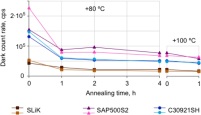http://arxiv.org/abs/1609.01342
It is understood that in free bosonic theories, the classical field theory accurately describes the full quantum theory when the occupancy numbers of systems are very large. However, the situation is less understood in interacting theories, especially on time scales longer than the dynamical relaxation time. Recently there have been claims that the quantum theory deviates spectacularly from the classical theory on this time scale, even if the occupancy numbers are extremely large. Furthermore, it is claimed that the quantum theory quickly thermalizes while the classical theory does not. The evidence for these claims comes from noticing a spectacular difference in the time evolution of expectation values of quantum operators compared to the classical micro-state evolution. If true, this would have dramatic consequences for many important phenomena, including laboratory studies of interacting BECs, dark matter axions, preheating after inflation, etc. In this work we critically examine these claims. We show that in fact the classical theory can describe the quantum behavior in the high occupancy regime, even when interactions are large. The connection is that the expectation values of quantum operators in a single quantum micro-state are approximated by the corresponding classical ensemble average over many classical micro-states. Furthermore, by the ergodic theorem, the classical ensemble average of local fields with statistical translation invariance is the spatial average of a single micro-state. So the correlation functions of the quantum and classical field theories of a single micro-state approximately agree at high occupancy, even in interacting systems. Furthermore, both quantum and classical field theories can thermalize, when appropriate coarse graining is introduced, with the classical case requiring a cutoff on low occupancy UV modes. We discuss applications of our results.
Read this paper on arXiv…
M. Hertzberg
Wed, 7 Sep 16
31/61
Comments: 7 pages, 4 plots




















































































































